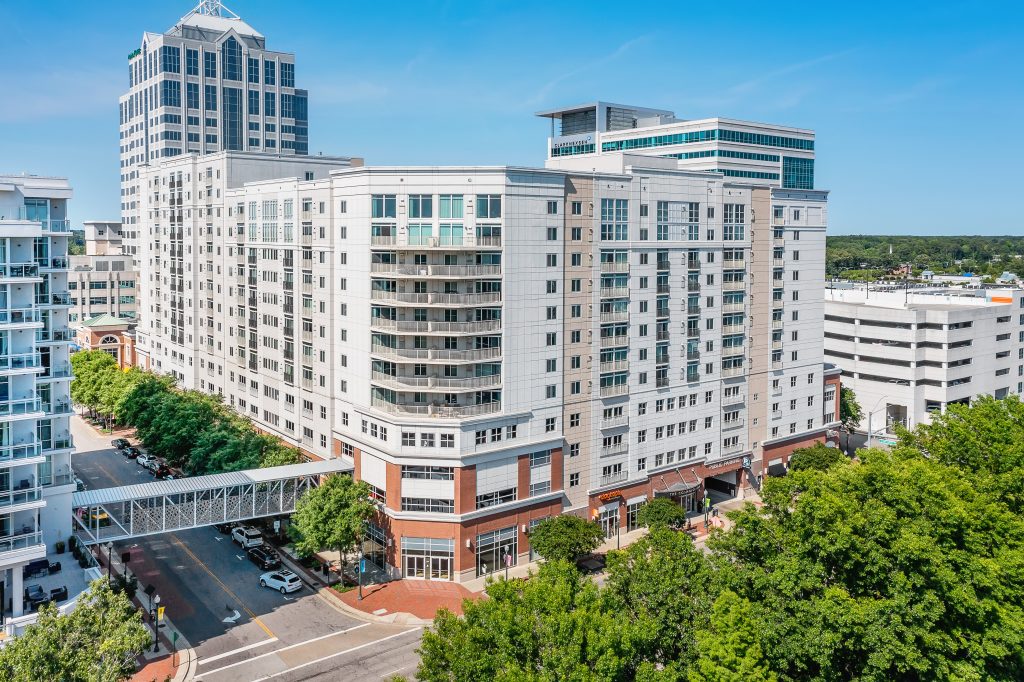April 17, 2025
How People-Centric Design Creates Long-Term Value in Urban Development

Successful real estate developments are defined by the experiences they cultivate. When places are designed with people in mind, they become more than buildings. They serve as destinations that enhance daily life, foster connection, and strengthen communities. Walkability, sustainability, and thoughtful public spaces all contribute to sustained performance. Armada Hoffler continues to apply these principles to create lasting impact across its portfolio and the communities it serves.
The Economic Impact of People-Centric Design
Walkable, thoughtfully designed spaces draw more visitors, increase consumer spending, and boost local businesses. When office, retail, and residential uses are brought together in one destination, activity remains steady throughout the day. These areas tend to see stronger leasing performance and attract long-term investment.
One example is Town Center of Virginia Beach, which has become a thriving urban district with restaurants, retail, office space, and residential living. What was once underutilized land is now an active downtown destination. Sidewalks, plazas, and open public spaces create a setting that draws both locals and visitors. The district’s ongoing success stimulates local economic growth.
According to the Urban Land Institute, mixed-use districts that integrate diverse uses in walkable formats tend to have stronger economic performance and higher tenant retention over time.
Designing for Sustainability and Mobility
Community-first spaces also align with sustainability goals. Reducing car dependency improves environmental performance and creates healthier communities. Walkable developments naturally promote more active transportation, reducing emissions and energy use.
Harbor Point in Baltimore, for instance, includes LEED-certified buildings, public parks, and direct access to the waterfront. Pedestrian paths connect residential and commercial areas, and green roofs and efficient systems improve environmental outcomes. These strategies enhance resilience and address the needs of residents and workers alike.
The EPA has consistently recognized the value of smart growth and walkable communities in reducing environmental impact and improving public health, reinforcing the need for this type of development strategy.
Spaces That Bring People Together
This type of design also helps strengthen local identity and foster engagement. Gathering spaces, cultural venues, and event-friendly layouts create opportunities for the community to interact and engage with their surroundings. These shared environments cultivate a sense of place while supporting small businesses, local artists, and public events.
Chronicle Mill in Belmont, North Carolina, is a historic redevelopment that combines residential living with community-focused features. The preserved mill architecture, outdoor courtyard, coworking space, and retail offerings are designed to bring people together. The property respects the site’s history while introducing new opportunities for connection and growth.
The Project for Public Spaces emphasizes the social and economic value of placemaking as a core part of successful urban development.
Why This Approach Builds Value
People-centric design creates stronger, more resilient properties. These developments ensure stable occupancy, tenant satisfaction, and long-term returns. They’re built to adapt to changing needs while preserving value for owners and communities.
Armada Hoffler continues to develop spaces where individuals can thrive, whether it’s a suburban residential community, an urban office environment, or a mixed-use district. When real estate is built to serve its users, it performs better — both financially and socially.
To explore more of our portfolio, visit the Armada Hoffler properties page. For updates on how we’re shaping the future of real estate, visit our news page or follow us on Instagram, Facebook, and LinkedIn.